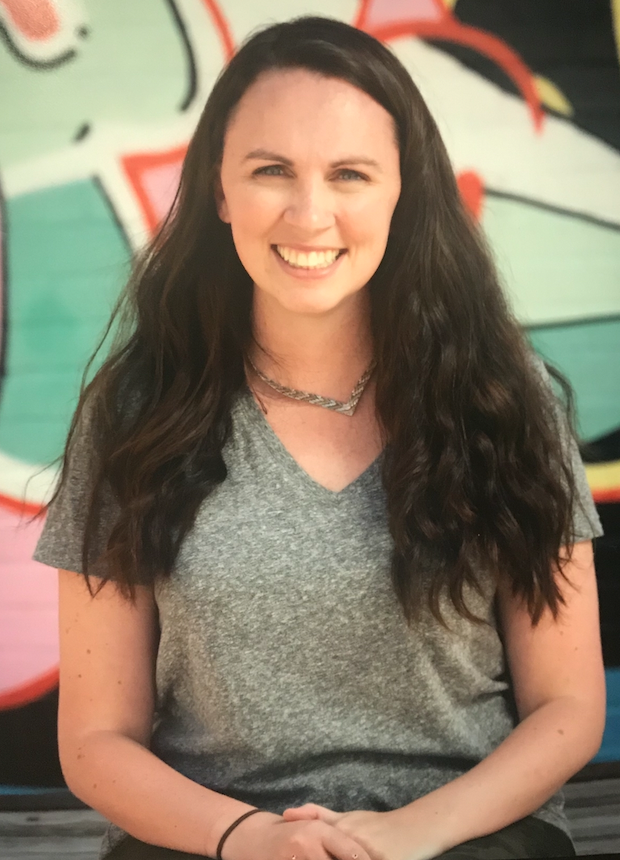Alex Zimmerman, Chalkbeat New York,
Most teaching will remain virtual this fall. Is NYC working fast enough to improve it? was originally published by Chalkbeat
Much of the debate around opening New York City public schools has centered around implementing health and safety guidelines, such as temperature checks, wearing masks, and contact tracing.
Regardless of whether parents and teachers ultimately feel safe streaming into school buildings, the majority of teaching and learning will continue to be conducted virtually. The stakes are high to make remote learning better, whether families opt for full-time distance schooling or choose a hybrid model, which has students on campus one to three days a week and learning online the rest of the time. Yet, some educators are concerned that the city hasn’t done enough to plan for online learning this fall.
Remote lessons went “every single way,” said Paula White, the executive director of Educators for Excellence, a teacher advocacy group. “They went well, they went horrible, they went mediocre. It was very building-specific and very principal-driven.”
Educators and top union officials fear that schools are once again racing to figure out the best approach to remote instruction with what they say is little guidance from the education department. The city has not yet offered detailed plans about who will be responsible for teaching students on the days they’re outside the school building, how much live instruction will be guaranteed, or how to coordinate curriculum for students who are fully remote and those who opt for the hybrid model.
The quality of instruction has always varied widely across schools, but as educators scrambled this spring to move lessons onto digital platforms amid the coronavirus pandemic, those disparities were compounded by the sheer difficulty in adapting to a new medium. In the absence of sufficient planning and training, educators and observers are worried that many schools will continue to struggle educating students remotely, and that the range of remote instruction will continue to vary tremendously across schools, or even teacher-to-teacher within schools.
“There’s a reason why I was writing editorials and on TV in the middle of April yelling, ‘we need to start planning now,” said Michael Mulgrew, president of the United Federation of Teachers, the city’s teachers union. “City Hall didn’t want to start planning until July.”
City officials disputed that they are behind in planning for the fall and said they have been planning since the day school buildings closed down in March. Additional guidance, officials said, will be made available “well before” the school year, which is slated to begin on Sept. 10.
“Health and safety come first,” Danielle Filson, an education department spokesperson, wrote in a statement, “and thanks to New York City’s incredible teachers, staff and families, our kids will receive the high-quality instruction they deserve.”
Staffing challenges throw a wrench into planning
One of the biggest roadblocks for schools to create a clear instructional plan is a basic staffing conundrum: Most teachers will be required to teach in person, but half or more students will be learning from home on any given day.
To help handle students who will be learning remotely, city officials are planning to deploy teachers who are granted medical accommodations to work from home, as well as administrators across the system who have teaching licenses but are not currently working in schools.
Since schools don’t yet know how many children will opt for remote learning and how many teachers will receive accommodations, scheduling remains a big question mark.
In a letter to parents this week, schools Chancellor Richard Carranza wrote that each student’s learning experience will be “fully managed” by their individual schools, and the “vast majority” of students will be taught by teachers from their school, though there will be exceptions.
Melissa Dorcemus, a teacher at Manhattan’s New Design High School who is part of her school’s planning team, said there is tremendous uncertainty about how to plan without knowing which teachers are expected to teach remotely.
Dorcemus is waiting to hear back from the department after she applied for a health accommodation to work from home because she is pregnant. If she does end up working with students in person, she is considering teaching both groups of students at once.

She would stream her biology class and create a recording for students who can’t make it at the scheduled time. Students could participate from home by posing questions and comments on a message board.
“I happen to like technology, so I don’t mind having live and remote all together,” Dorcemus said. At the same time, “I totally could see that being overwhelming for someone who hasn’t mastered Google Meet.”
While union officials suggested it’s unlikely that teachers would be required to teach both groups at once, Dorcemus said her school is considering giving in-person teachers time during the day to record virtual lessons or respond to students online.
Another unresolved question that will dictate what instruction looks like this fall is how much time teachers will be required to offer live instruction, which ranges from lessons with an entire class to office hours for student questions one-on-one or in small groups.
Unlike in the spring, when live instruction was not required at all, department officials have guaranteed that students who sign up for the fully remote learning option will receive some kind of “live interaction” with a teacher every day. However, city officials did not directly say how many minutes of live instruction students should receive or if students who opt for a mix of in-person and remote learning will be guaranteed any live instruction on the days they’re at home.
Shael Polakow-Suransky, the president of Bank Street College of Education and a former chief academic officer for the city’s education department, said the staffing dynamics could make it difficult to provide enough live interactions with teachers when students are learning remotely so that they remain connected and engaged with school.
“It’s going to be harder in some ways in the fall because you will have many fewer teachers to do the online work with students,” Polakow-Suransky said, adding that the city should consider prioritizing any possible federal stimulus money to add teachers or contract with community organizations to support students when they’re not physically in school.
“I’m very worried that the offerings for the out-of-school days will not be robust enough to keep students engaged and learning.”
Teachers will have to coordinate in new ways
New York City schools have a lot of freedom to choose their own curriculum, and city officials have indicated that’s not changing, despite advocates who have called for the city to adopt a more centralized approach to free up schools from each having to figure out their own strategies for remote learning.
That degree of autonomy raises big questions about how schools can make sure that the instruction students receive is coherent, especially if they are learning from a different set of teachers when they’re at home versus when they come into school buildings.
Brooklyn principal Kiri Soares is thinking about how to make the most of remote instruction for her roughly 500 students in grades 6-12.
Soares, who runs the Urban Assembly Institute of Math and Science for Young Women, plans to offer remotely all of the school’s electives, which includes a product design class built through a collaboration with Facebook.
But she continues to push up against an overwhelming number of unanswered questions. Besides not knowing the number of teachers she’ll have on hand in the building, she isn’t sure how she’ll create what feels like an actual school day for students who are learning from home without overextending her teachers. She doesn’t know who will fill in if her school’s chemistry teacher gets sick and she doesn’t have someone on hand who knows the curriculum.
“We’re not the size of Brooklyn Tech, so I don’t have 17 chemistry teachers teaching the same course,” Soares said.
One possible solution is to tap the network of the nearly two-dozen other Urban Assembly schools across the city to move in lockstep through a chemistry curriculum, so if they quickly need to merge classes virtually, there will be minimal disruption.
Union officials say there will need to be a broader — and unusual — degree of coordination between teachers as students move between virtual and in-person settings for those returning to buildings. Some educators may be responsible for teaching students in person and will then hand them off on the days they’re remote. Additionally, families who opt for fully remote learning have the opportunity to switch to the hybrid model at various points during the year, while those who choose in-person can go fully remote at any time.
“The whole idea is to have instruction that whether they’re in the building or not matches,” Mulgrew said, noting there should be “case conferencing” to make sure every teacher who is working with a given student knows what they have learned. “It’s a much higher level of coordination that we’ve never had to do before.”
‘There’s no good answer’
When school buildings shut down in March, teachers were given three days in person to begin mapping out how to transition their curriculum to a digital environment.
Dorcemus, the Manhattan high school teacher, said her school learned a lot through trial-and-error. They discovered that spending 20-30 minutes each morning in advisory groups, where teachers could play funny videos or create at-home scavenger hunts, was helpful for relationship-building and pulling students into the virtual school day. Holding those same sessions in the afternoon was mostly a bust. They also learned that it’s better to have more frequent classes throughout the week than a single long block.
As she prepares for the fall, Dorcemus said she’s craving more information about how other schools approached virtual learning. “I would absolutely be interested in some best practices,” Dorcemus said. “What are the tools schools are using that are working really well?”
It’s unclear how much training teachers will receive before the school year starts in September, as most are off for the summer — and many schools rely on teachers to help train each other.
Polakow-Suransky, the department’s former chief academic officer, said the city could deploy instructional coaches to help train teachers in blending remote and in-person learning and drawing on experts in virtual learning.
City officials said they’ve offered training to help educators with remote learning since March, though some educators and union officials have said they aren’t aware of training opportunities explicitly to prepare for the fall.
Regardless of the city’s efforts, many experts worry that it will be impossible to overcome the disadvantages of remote instruction.
“Even if we somehow hit virtual learning out of the park this fall, I still think there’s no way at scale it’s going to be adequate or is it going to address all of the inequalities that are opening up because of the digital divide,” said Sarah Cohodes, an education and economics professor at Columbia University’s Teachers College who has written about the city’s reopening plans.
“I am so sympathetic to the huge challenge of what is happening,” she added. “There’s no good answer.”
Chalkbeat is a nonprofit news site covering educational change in public schools.











More Stories
Kemp signs executive order to extend suspension of Georgia’s motor fuel tax until July 14
Florida continues to outperform U.S. in economic success
Newsom announces funding expansion for reproductive services